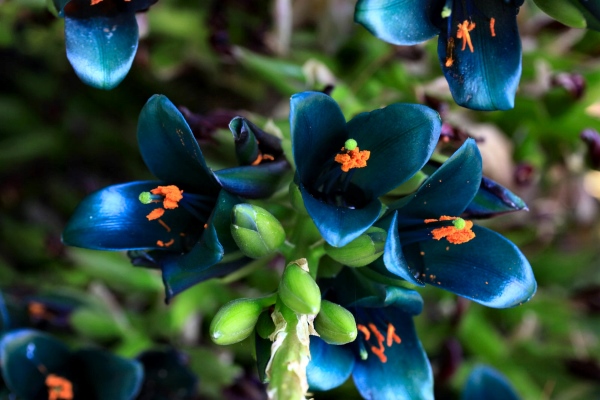Yes, blue puya (Puya berteroniana) is a real plant! This incredible bromeliad is endemic to Chile. This South American plant is a natural hybrid in the genus Puya of the pineapple family (Bromeliaceae). Approximately 200 species make up this family, which includes the tallest bromeliad, P. gigas (P. raimondi), which is indigenous to northern South America. Certain plants flourish in tropical rainforests across the world, where their aerial roots cling to tree bark.
According to a review of Puya, considering its rarity and intermediate traits between multiple species, it is most likely a hybrid. With its enormous, 7-foot-tall flower stalk, this is one of the craziest plants anywhere in the world! Many times, Puya alpestris plants—a distinct species—have been mistakenly called Puya berteroniana. The Mapuche people of Chile and Argentina gave rise to the term puya, which means point and refers to the distinctive shape of the inflorescence.

The Blue Puya is a species that grows in different places in Chile, but its flowers are bluer than the more emerald-tinted turquoise Puya. This blue variety’s outer points are thicker and whiter, giving the flowers an even deeper blue appearance!
The stiff, spiny-edged leaves of most species are long and narrow, growing in a dense rosette on somewhat thick, woody stems that are found on the chilly, dry, stony slopes of the Andes mountains.
If you look closely, you will be amazed by nature’s craft. Its mesmerizing turquoise-blue color is very rare in the plant world, and it’s even rarer to be combined with orange. If you like exotic, elegant plants, you’ll add Blue Puya to your collection.
A terrestrial bromeliad blue puya develops a rosette of silvery-green leaves approximately three feet long. However, to be on the safe side, handle the leaves since they are very spiky. The blue puya flower blooms silky-smooth, and the stalks themselves are velvety. Hummingbirds perch on the organic perches and gather nectar from the velvety petals, while bees and moths feast on the anthers loaded with pollen.

Blue Puya is a hardy in zones 8b–11. The mature plants are reported to withstand temperatures as low as 20 degrees F (-7°C), but younger plants should be protected from frost for the first two or three years. It likes partial sun, though it may benefit from some afternoon shade in warmer climates. Although it is native to a cooler climate, think of it as an experimental plant in hot climates.
It can take up to 8–10 years to reach a flowering size, but once it does, you will be rewarded with breathtaking colors! It takes six to eight months for it to blossom; after that, it dies and disappears. Many bird species love to perch on the outward points of these giant, blue stalks and take the nectar inside these otherworldly blooms, which occur in the warm months of May or June.
They can be multiplied in pots or planted directly in the ground; the ideal potting media is a mixture of sand and coir fiber for cacti. The flowers will blow your mind with their majestic beauty. Unlike the tree-dwelling bromeliads, it has fully functioning roots and grows in soil like a cactus or succulent. Eventually, it will form a large colony of pups! We’re sure, that standing next to one of these enormous, blue stalks will be an amazing experience.
Read More: The Mind-blowing Giant Groundsels (Dendrosenecio kilimanjari)







